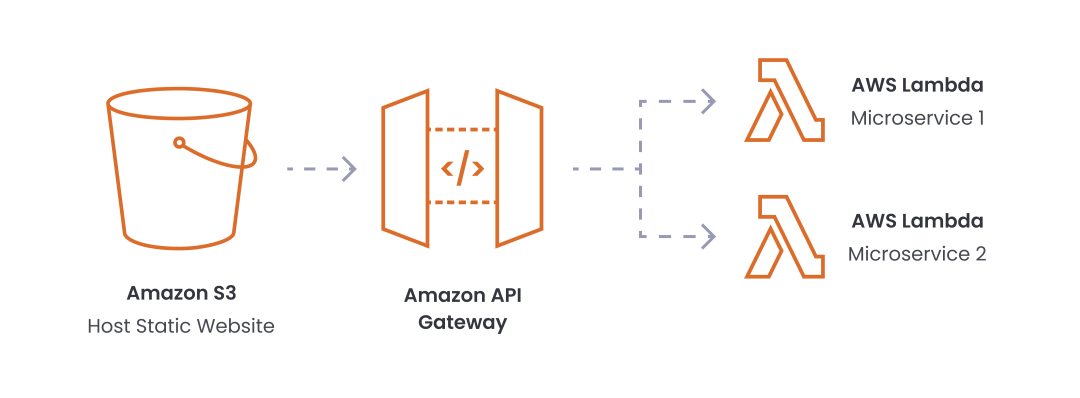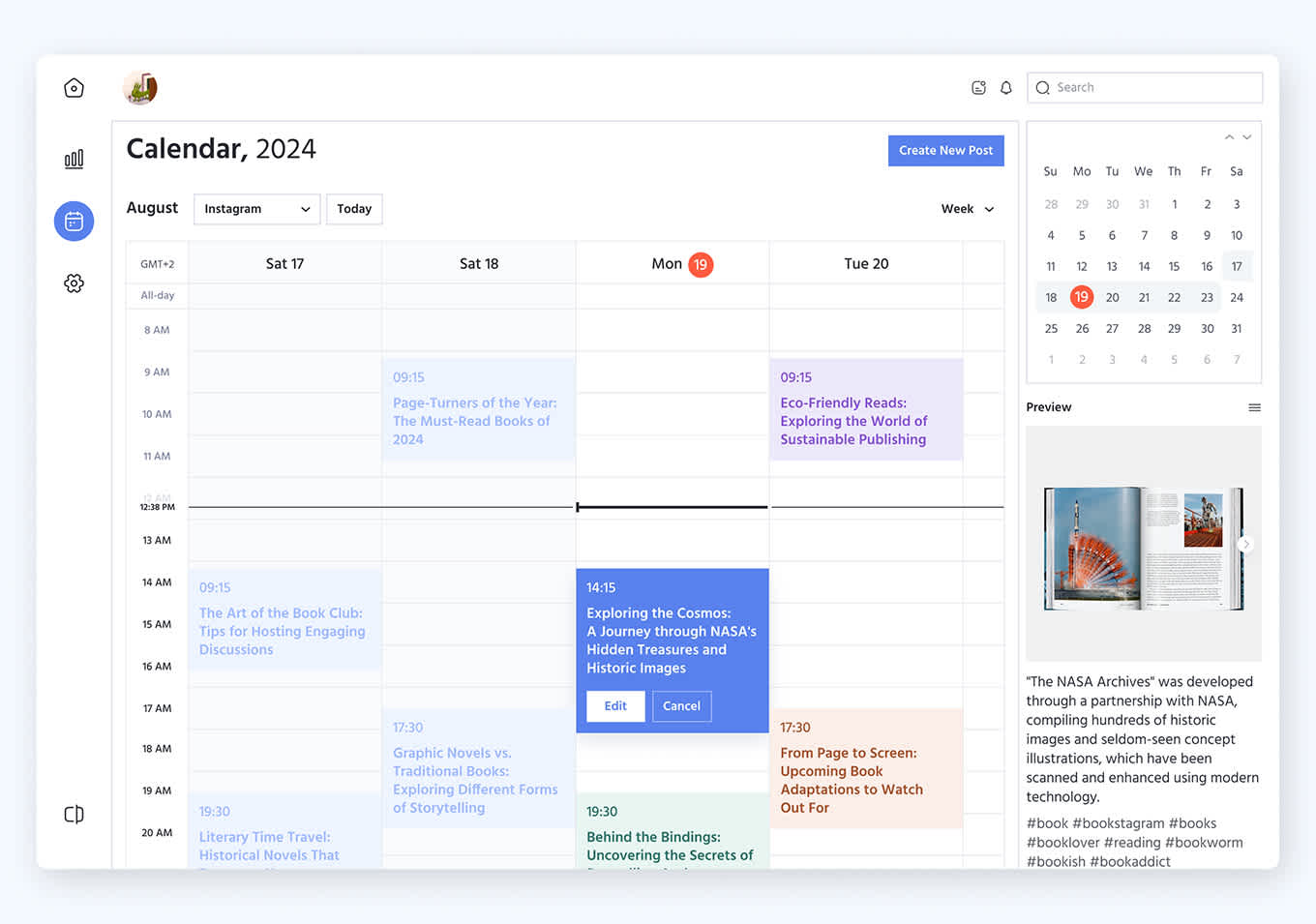Micro SaaS Development Guide: Defining the Scope of Work at Each Stage
The SaaS market is rapidly growing every year and is expected to reach $908 billion by 2030, compared to $237 billion in 2022. This shows that the demand for SaaS solutions is high and will continue to be so in the future.
One of the latest trends in the SaaS industry is the development of micro SaaS. Unlike traditional SaaS products, micro SaaS offers more targeted solutions to specific customer problems. Micro SaaS does not require much effort for integration and customization, making it available for instant use.
Since micro SaaS products have a unique nature, the development process can be nuanced. If you have a micro SaaS idea and are interested in the technical side of developing a micro SaaS, this article is for you.
Understanding micro SaaS architecture
Micro SaaS architecture usually follows a microservices architecture pattern. This means that it is composed of multiple services that are interconnected and responsible for specific functionalities. These services communicate with each other using APIs. Unlike monolithic architecture, where all functionalities are tightly integrated into a single codebase, microservices follow a distributed approach. In a Micro SaaS architecture, each service operates independently and serves a particular purpose.
Micro SaaS architecture layers
A typical micro SaaS architecture consists of several layers. These are
presentation, application, business logic, and data layers.
The presentation layer handles user interface components and interaction.
The application layer contains the core logic and processing algorithms.
The business logic layer implements the business rules and workflows.
The data layer manages data storage, retrieval, and manipulation.
Additionally, micro SaaS architecture often has extra services such as authentication, authorization, caching, and logging. These services enhance the security and performance of the micro SaaS product.
Focus on scalability
Although micro SaaS has a more narrow focus than traditional SaaS, it still needs to be prepared for sudden growth in user traffic and scaling. Microservice architecture and cloud infrastructure cope well with this task. They enable you to scale horizontally by adding new IT resources as needed, either manually or automatically. This helps you avoid downtime during peak traffic periods and always maintain optimal performance for your micro SaaS.

Choosing the right technology stack
Selecting the appropriate technology stack is a critical decision in the process of micro SaaS development. The tech stack includes the programming languages, frameworks, libraries, databases, and infrastructure components. Here's what you should consider in the process of micro SaaS tech stack selection:
Popularity of programming languages and frameworks
Programming languages should resonate with the idea and purpose of your micro SaaS product. However, popular languages and frameworks have a wider community and a bigger talent pool. This means you can hire a micro SaaS development team and start the development process faster.
Popular choices for micro SaaS development include JavaScript (Node.js), Python (Django, Flask), and Java (Spring Boot).
Suitability of database technologies
Database technologies play a crucial role in storing, retrieving, and managing data for micro SaaS applications. When considering different database options, it's essential to evaluate them based on the specific requirements of your micro SaaS solution.
SQL and NoSQL databases are two principal options to choose from. SQL databases are easy to maintain but less scalable, whereas NoSQL databases are more complex to maintain but offer better scalability.
Another option to consider is choosing between OLAP and OLTP databases. If your micro SaaS application deals with reports and analytics, OLAP databases are the way to go. On the other hand, OLTP databases are more suited to handle daily user transactions such as money transfers.
According to StackOverflow, the most popular databases in 2023 were PostgreSQL, MySQL, SQLite, MongoDB, and Microsoft SQL Server.
Suitability of cloud provider
When it comes to micro SaaS products, the ideal solution is cloud infrastructure. This allows you to quickly adjust the resources you're using as per user traffic and data processing needs. Depending on your micro SaaS scope, you'll need to choose a suitable cloud provider and cloud model.
It's worth noting that you aren't limited to working with a single cloud provider. A multi-cloud infrastructure allows you to deploy SaaS across different cloud platforms and select the most profitable services from various providers.
The most popular cloud providers nowadays are AWS, Google Cloud, and Microsoft Azure.
Compatibility with integrations
Ensure the selected technology stack is compatible with third-party services your micro SaaS product may need to integrate. Assess the availability of APIs, SDKs, and developer tools for seamless integration. Prioritize interoperability, modularity, and extensibility when considering integrations.
Ensuring security
Despite the compact nature of micro SaaS solutions, they still handle sensitive user data and require robust security mechanisms. Common security challenges in micro SaaS include data breaches, unauthorized access, and data loss. To mitigate these risks, micro SaaS developers must adopt a multi-layered approach to data security.
Encryption, authentication, and authorization
Encryption ensures that sensitive data remains encrypted throughout its lifecycle. The most popular data encryption methods in micro SaaS development are AES (Advanced Encryption Standard), RSA (Rivest-Shamir-Adleman), and HMAC (Hash-Based Message Authentication Code).
The authentication mechanism identifies and prevents unauthorized access to the micro SaaS platform. Multi-factor authentication is a proven way to verify a customer's identity and ensure that no third-party actors access sensitive data.
Authorization ensures that users have access only to the data and features relevant to their roles and responsibilities.
Compliance with data protection regulations
If your micro SaaS collects customers' data, it should be compatible with the General Data Protection Regulation (GDPR) and the California Consumer Privacy Act (CCPA).
Key aspects of compliance include
obtaining user consent for data processing
providing transparent data handling practices
enabling users to access, rectify, or delete their data
To enhance privacy in your micro SaaS, you can anonymize and pseudonymize data.
You should also consider compliance with other industry-specific regulations, depending on the field you are working in. These could be HIPAA, PCI DSS, or COPPA.
Creating intuitive UI/UX design
For micro SaaS products targeting niche markets or addressing specific pain points, exceptional UI/UX is paramount. A well-crafted UX design enhances user satisfaction, streamlines workflows, and drives user engagement.
Given the resource constraints in micro SaaS projects, prioritizing UX design can yield significant ROI. To create excellent UI/UX, you need to ensure quality at each step of its creation.
Information architecture
During this phase, UI/UX designers work on creating the information architecture of a micro SaaS. The information architecture is responsible for organizing the content in a way that makes it easy for users to navigate the software product. Once the information architecture is developed, it will result in a map of the micro SaaS and user flows.
Wireframing
At this stage, UI/UX experts will draft a black-and-white sketch of your future product. This sketch would contain the micro SaaS layout and user flows. It would also visualize data to some extent so that you know where specific buttons, icons, or images are placed.
Prototyping
After creating a wireframe for the micro SaaS product, designers move on to developing a clickable prototype. The clickable prototype still lacks colors but allows you to click, scroll, and perform other actions to test the product's functionalities. By testing this prototype, you can identify any issues related to user interaction and eliminate them before the UI design is finalized.
UI design
UI designers create various visual elements of micro SaaS. These elements include color schemes, typography, iconography, and visual hierarchy. They ensure the interface is intuitive, easy to navigate, and visually engaging. It is also crucial that UI elements go in hand with brand identity and user preferences.

Responsive design
One of the primary objectives of UI/UX design is to ensure that the micro SaaS solution is compatible with all screen sizes. Users must be able to access the micro SaaS product on desktops, mobile phones, and tablets. By creating a seamless UI/UX experience across different resolutions and orientations, you can enhance customer satisfaction and increase their loyalty.
Developing MVP
When building an MVP for a micro SaaS, it's crucial to focus on the core features that address the primary pain points of your target audience. To start, identify the essential functionalities that your micro SaaS must have. These functionalities should align directly with the value proposition of your product and solve a specific problem for your target users. Avoid adding unnecessary features that can bloat your MVP and delay its time to market. Instead, prioritize features based on their importance and potential impact on user experience.
You can also consider developing a Minimum Lovable Product (MLP) rather than MVP. This approach also aims to test the product on the market. However, unlike MVP, MLP focuses not on the basic features of micro SaaS but on the minimum set of features that would delight customers.
Testing
The testing scope for micro SaaS is usually more targeted and specific compared to traditional SaaS. However, it still covers a wide range of testing activities to ensure a high quality of the end micro SaaS product.
A key point in micro SaaS testing is agility. It ensures quick response to user feedback and market demands through frequent releases. This often involves automated testing to speed up the testing process and delivery cycles.
The scope of work for testing micro SaaS involves:
Functional testing
At this stage, QA engineers verify that all the micro SaaS features work as intended. They test user interactions, input validations, and business logic to ensure proper functioning. Additionally, micro SaaS testers conduct regression testing to detect new bugs with existing features.
Compatibility testing
This type of micro SaaS testing ensures compatibility with different web browsers, operating systems, and devices.
Usability testing
QA engineers evaluate if the UI/UX of micro SaaS is intuitive, user-friendly, and aligned with user expectations. This is when usability issues, such as confusing navigation, unclear instructions, or accessibility barriers, are identified and removed.
Performance testing
QA engineers assess the performance of the micro SaaS under various load conditions. They conduct load, stress, and endurance testing to see how micro SaaS handles concurrent user sessions, data processing, and transaction volumes.
Security testing
This type of testing in micro SaaS aims to identify and mitigate security vulnerabilities. The most common of them are SQL injection, cross-site scripting (XSS), and authentication bypass. In some cases, you can also conduct penetration testing and security code review.
Integration testing
Here, you need to verify the seamless integration of the micro SaaS application with third-party services and APIs. The QA engineers in your micro SaaS development team should test data exchange, interoperability, and error handling between your product and external components.
Compliance testing
Finally, you should ensure compliance with relevant regulatory requirements, industry standards, and data protection laws, such as GDPR, CCPA, HIPAA, or PCI DSS. It is necessary to verify that the micro SaaS application adheres to specific privacy and data protection practices.
Deploying micro SaaS
Effective deployment is critical for the success of micro SaaS software. By leveraging best DevOps practices, you can build a scalable and resilient micro SaaS solution. The scope of work for this process includes:
Environment configuration
Your micro SaaS development team should set up development, testing, staging, and production environments to support the deployment pipeline. They would also configure virtual machines, containers, databases, load balancers, and networking settings based on deployment requirements.
Continuous Integration/Continuous Deployment (CI/CD)
DevOps engineer implements CI/CD practices to automate the build, test, and deployment processes. They usually use tools like Jenkins, GitLab CI/CD, or CircleCI to automate the deployment stages.
Version control and artifact management
At this stage, DevOps experts set up a version control system, e.g., Git, to manage application code, configuration files, and infrastructure-as-code templates. They also set up artifact repositories, e.g., Docker Hub and Amazon ECR, to manage deployment artifacts.
Deployment automation
Deployment tasks are automated with the help of configuration management tools like Ansible, Chef, or Puppet and infrastructure-as-code frameworks like Terraform or AWS CloudFormation.
DevOps engineers also create deployment scripts to provision infrastructure resources and deploy the code of the micro Saas solution.
Start your micro SaaS project with Erbis
Micro SaaS is a modern trend in software development. It offers compact yet robust solutions that are more cost-effective to implement than traditional SaaS products.
Maintaining high-quality functionality and user experience in micro SaaS products is crucial. That's where Erbis can assist you.
We have 11+ years of experience in SaaS development, and our team consists of 100+ professionals, including developers, testers, designers, and business analysts. We specialize in various industries, including supply chain, EdTtech, FinTech, healthcare, and e-Commerce.
If you're seeking a reliable technology partner to bring your micro SaaS product to market, don't hesitate to connect. We're here to help you every step of the way.
